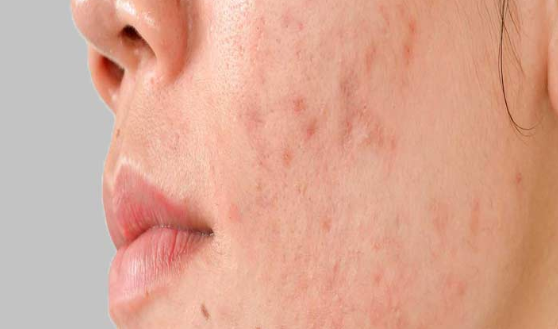The skin is the first to show the signs of aging and can take a toll in many ways including expression lines, wrinkles, loss of fat volume, and loss of bone structure. With thread lift anti-aging treatments offered by the best skin specialist in Bangalore, Dr. Rasya Dixit at Dr. Dixit’s Cosmetic Dermatology Clinic, one can combat aging and get back a youthful look.
Common Signs Of Aging:
Dry skin is the first visible sign of early aging. The skin exfoliation process decreases, causing dead skin cells to accumulate, as age count increases. Sun damage can strip the skin of moisture resulting in rough dry skin.
As the skin ages, it produces less collagen, the substance which is responsible for plumping and supporting younger skin. Without collagen’s effects, pores lose elasticity and become dilated and appear enlarged. This is additionally provoked by excessive sun exposure. Enlarged pores make the skin texture look irregular and rough.
Wrinkles appear because natural substances such as collagen, elastin, and hyaluronic acid decrease with age. This together with environmental factors such as exposure to the sun, stress, smoking, and other health conditions all continue to be the cause of wrinkles and folds.
Volume loss is an advanced sign of aging. This volume loss is the result of a thinning of the fatty layer under the skin, muscle atrophy, and a decrease in collagen and elastin in the skin. Volume loss can make the face appear sunken.
All these concerns can be managed with the best thread lift and other anti-aging treatments in Bangalore offered by Dr. Rasya Dixit.
Thread lift treatment:
A thread lift is a less invasive procedure curated for people experiencing early signs of aging such as facial sagging and depleted skin laxness. Treated areas will be marginally raised, reducing sagging and providing a rejuvenated appearance, almost immediately. The procedure can be done in less than one hour, depending on the areas to be treated. Skin lift, tightening and smoothing can be seen as a result of thread lift.
Targeted Areas For Thread Lift:
Jawline
Browline
Under the eye
Forehead
Cheeks
Good Candidate For Thread Lift:
The thread lift procedure is an ideal choice for those who want to correct skin sagging, droopy facial structures, laxity, and smoothness, including the neck area. The thread lifts are mainly effective for patients who have mild to moderate jaw problems of the lower face. The procedure is also effective for patients who feel like improving frown wrinkles on the cheeks.
Thread Lift Treatment Procedure:
During a thread lift procedure, a topical anesthetic cream is applied to the patient’s skin for 30 minutes. The area to be treated is then cleansed with alcohol. Thin threads are then inserted into the facial skin by making tiny incisions using a hollow needle in the targeted area. One end of the thread is delicately tied to firmer underlying internal structures, while the other end goes beneath the skin. The filaments on the sutures settle into the sagging areas of the face, as the specialist withdraws the needle. These threads are made to secure to the skin tissue and then pulled back to elevate sagging skin, tighten the face and set it into a more youthful-looking appearance.
Recovery from this minimally invasive thread lift procedure is short and simple. Patients may experience swelling and bruising for a few days following the procedure. Patients may continue daily activities immediately after treatment but should avoid heavy exercise for one week and facial massages for at least two weeks.
Dr. Rasya Dixit, a skin doctor in Bangalore also offers various other anti-aging treatments like chemical peels, lasers, dermal fillers, photo facial, PRP, mesotherapy, medifacial, and IPL that are proven very much effective in reducing and managing age-related concerns like open pores, pigmentation, skin laxity, double chin, under-eye dark circles, sagging skin, and thin lips.
Benefits Of Thread Lift:
The thread used in this treatment is made up of a biodegradable polymer, it is slowly absorbed by the body over time. It naturally stimulates collagen, elastin, and hyaluronic acid to provide a long-lasting, more lifted, and youthful appearance.
Thread lifts work to smooth out fine lines and wrinkles because they stimulate new collagen production.
As they stimulate new collagen, thread lifts will naturally tighten skin, helping to reduce any facial sagging.
Thread lift is a safe and effective treatment, taking less than one hour. It is comfortable, with a numbing cream applied to reduce any pain that may be felt during the procedure.
To know more about skin cosmetic treatment and anti-aging treatment, consult Dr. Rasya Dixit, Best Dermatologist in Bangalore at Dr. Dixit Cosmetic Dermatology Clinic.




